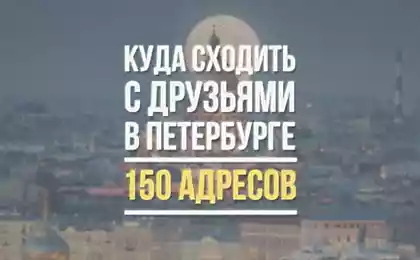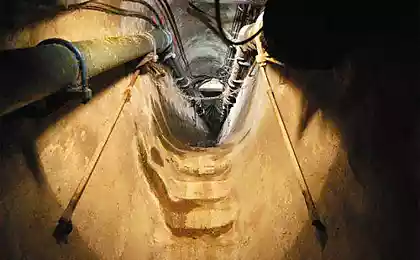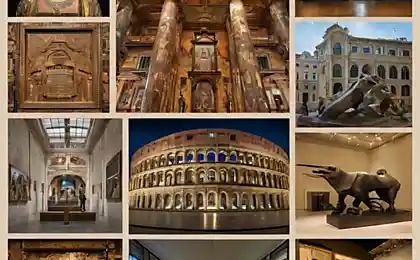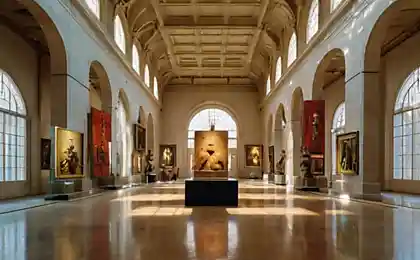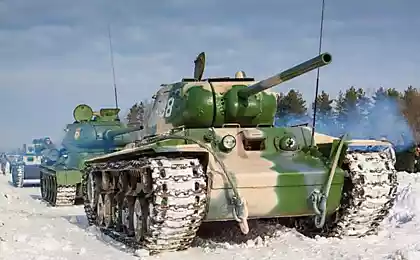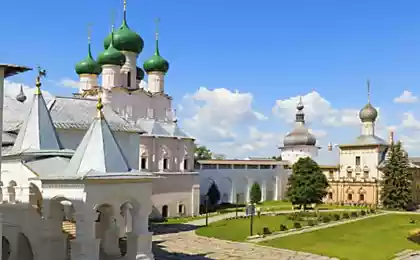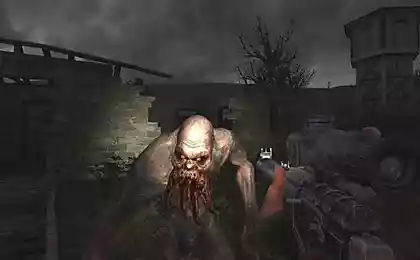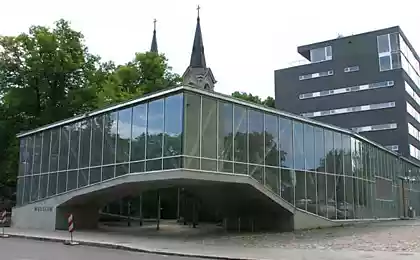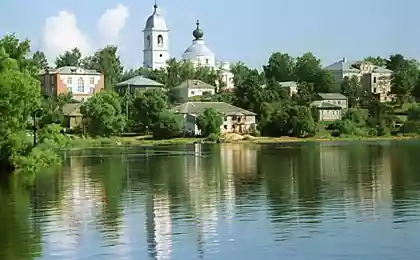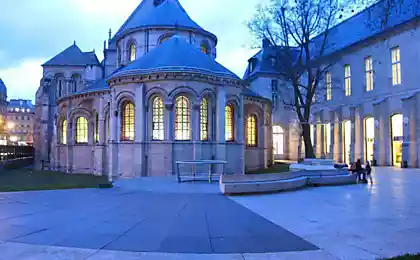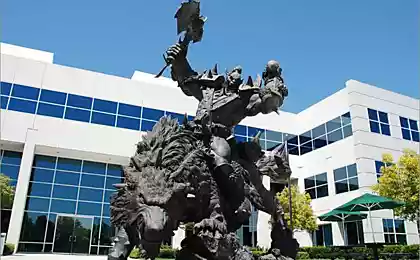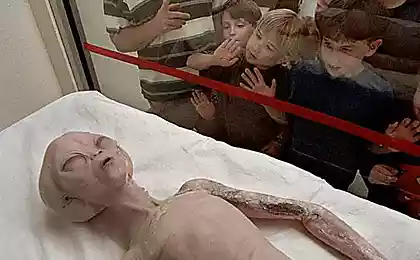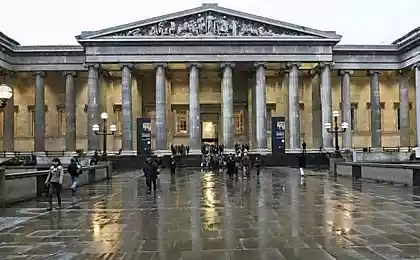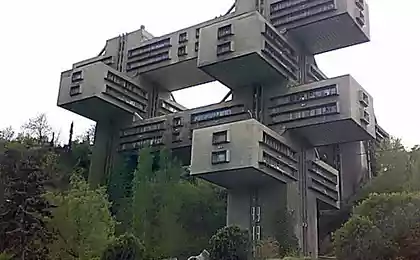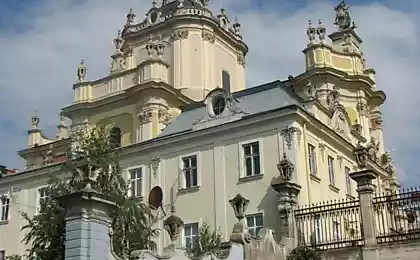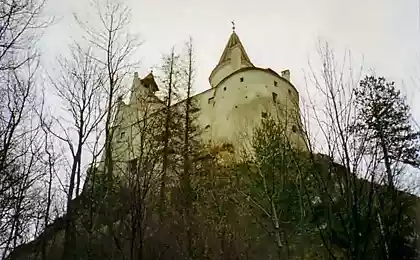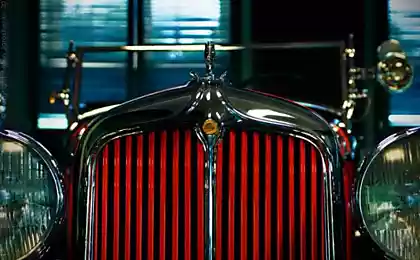1017
Tallinn. Occupation Museum (57 photos)
A museum of occupation, Estonians did not give an already existing building, as Latvians and Lithuanians, and built a new, modern - with glazed from floor to ceiling. Is a museum on almost on the border of Vana Tallinn and go before him seven minutes walk from the Cathedral and Toompea Al.Nevskogo.
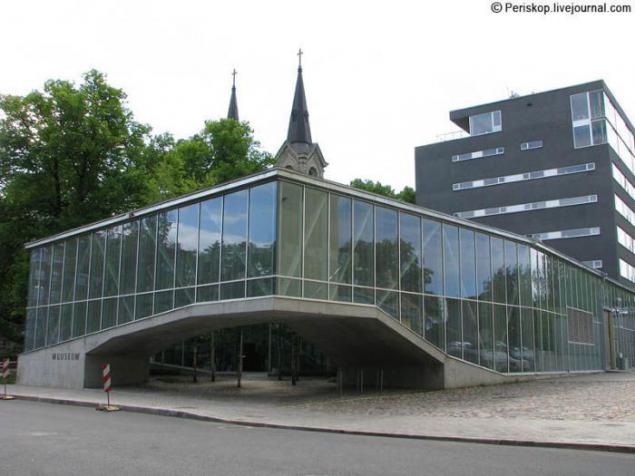
Inside the museum.
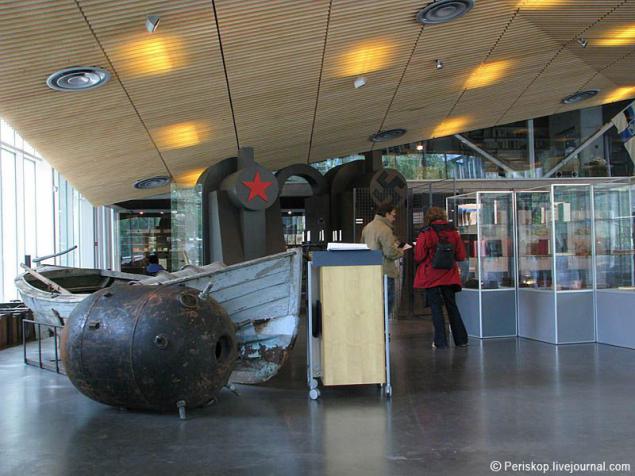
Composition "Two Steam" is central to the exhibition and is dominant, as if designed to constantly remind the visitor of the Nazi-Soviet "identity." And by the way, the correct name of the Museum - Museum of the Occupation (not one of occupation). Although, in reality it is evil lies - as about 97% of the exposition is devoted to only the Soviet era.
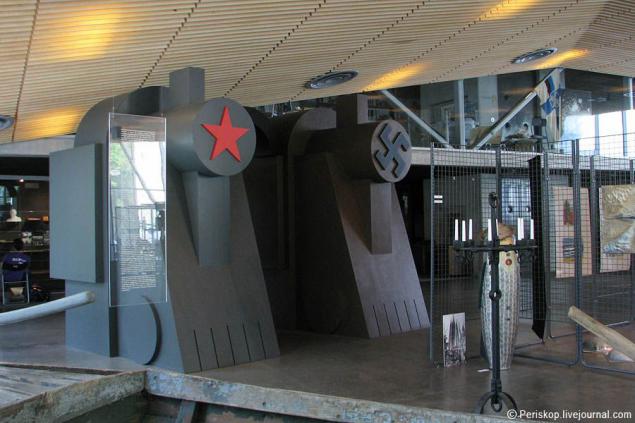
Exhibits time of the Nazi occupation (1941-44) piece and find them among the variety is not easy. However, the Nazi episode in the history of Estonia, the creators of the exhibition are quite complacent (their comments show the 2nd part), noting its softness and calm for the country, as compared to the Soviet occupation.
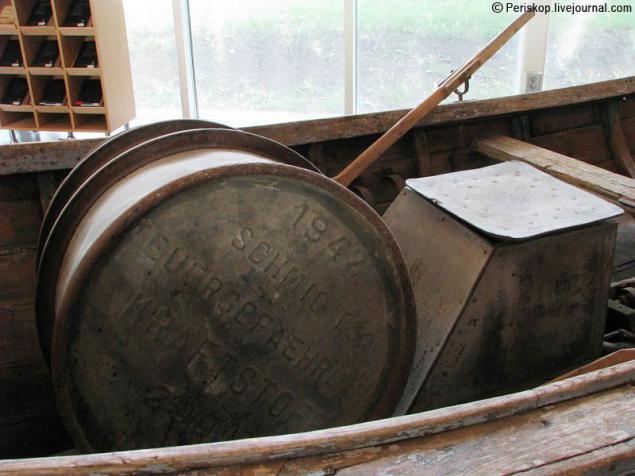
Before the steam locomotive that's worth so cute zhelezyachnye kreatiff.
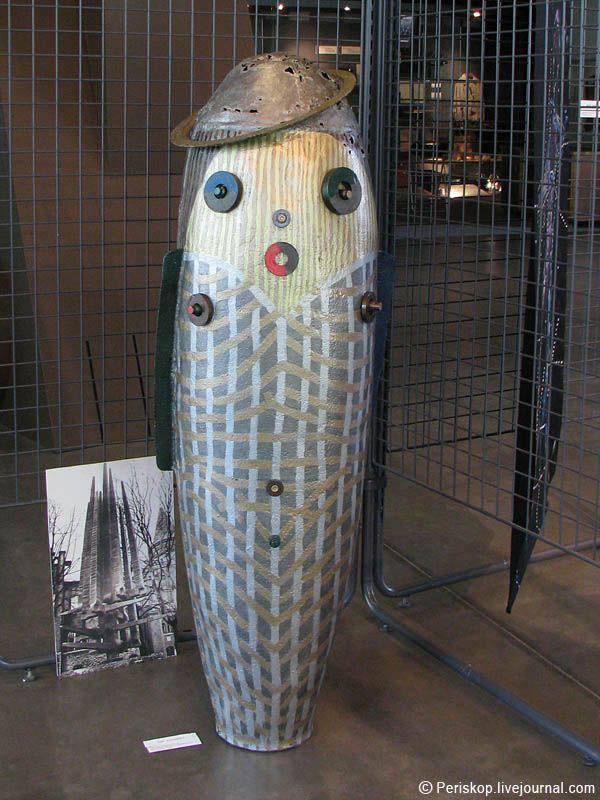
Let's Let's go for the "Two Steam" and look at the back of their boilers.
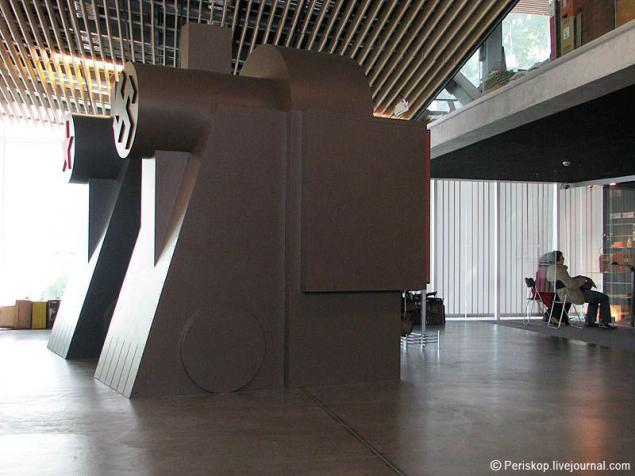
In the steam locomotive, co-stars in the rear stands Grandpa Lenin (Stalin not that interesting!), And in the next - the Fuhrer of the Third Reich.
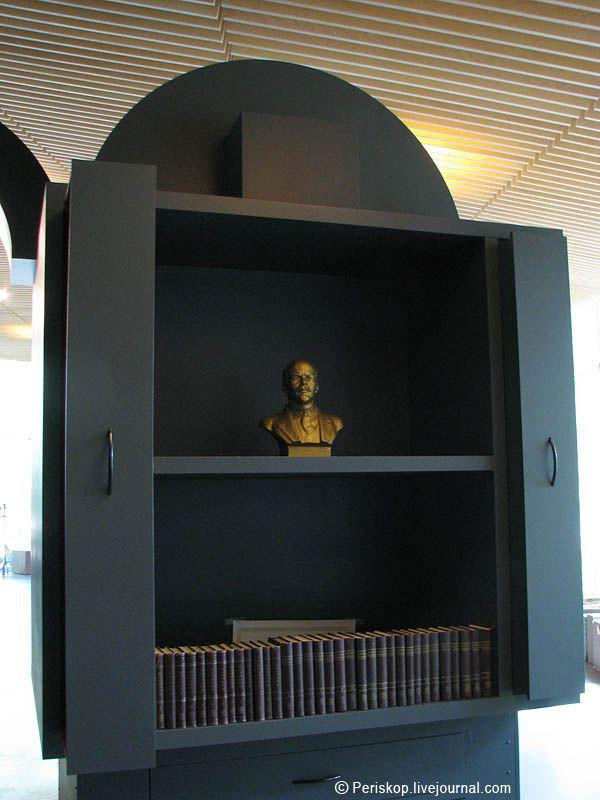
For "Steam Engine" are showcases with exhibits, as well as a space for meditation. You can sit on the chair and indulge in a long video and audio rite on the topic of the Soviet occupiers. In principle, an educated decision.

Closer to meditative storefronts closer. In the foreground - Finn, German and Russian, all in the form of the era, with strained to place persons with woolen tights, why created several surreal watching experience.
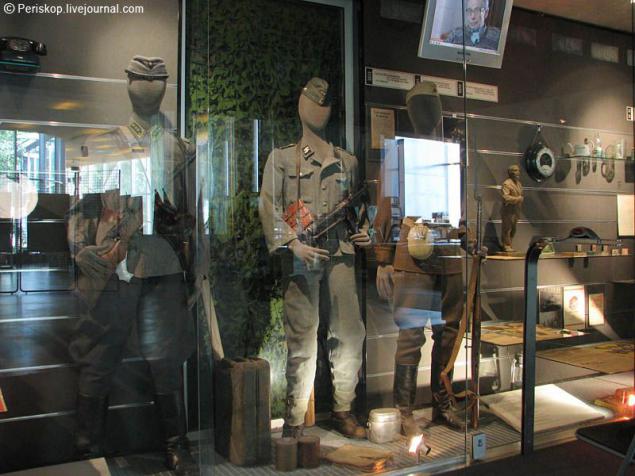
Meditation is very relevant here, because right next door to the office, "Defence League" (sort of Estonian DOSAAF). In the photo - packed by all the canons of this guy from the office.
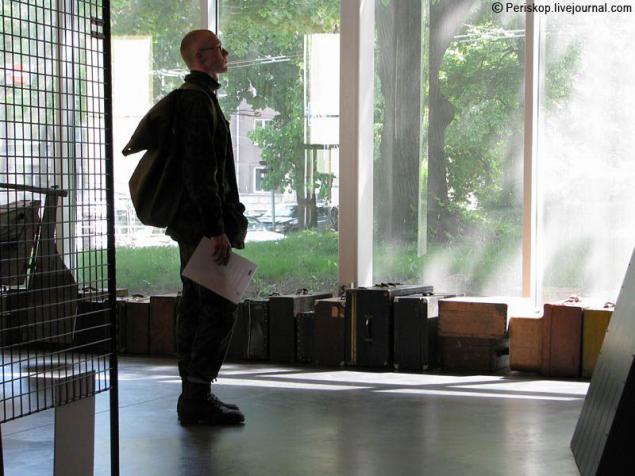
Long series of suitcases in the glazing may symbolize the Great Baltic Link.
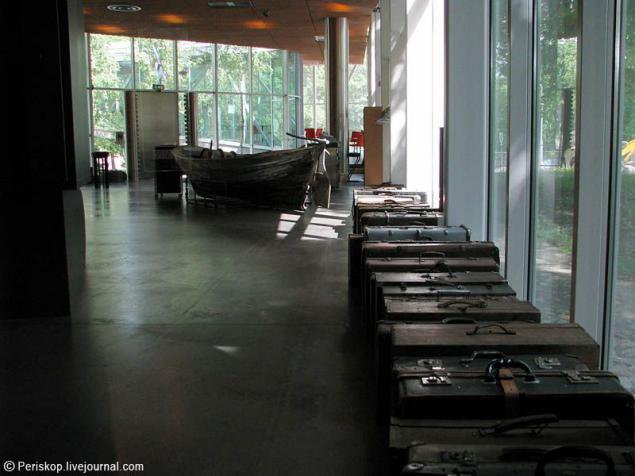
If the shift from glass closer to the end wall, we see the beginning of the collection of "Soviet" artifacts (dental chair, a telephone booth, etc.); behind the fence framed banners - the entrance to the Baltic Main Occupation water closet.
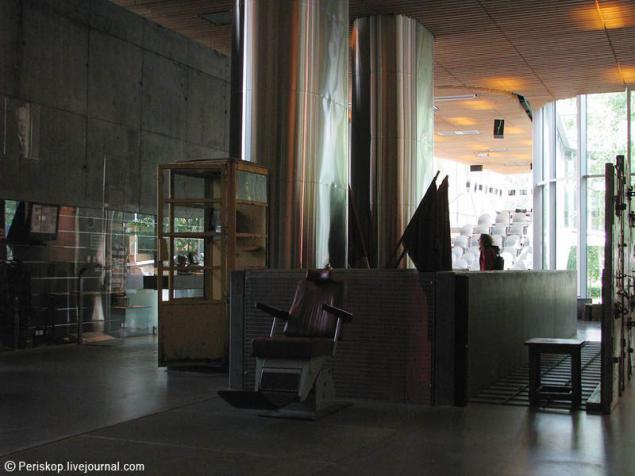
Before entering the G.P.O.Vaterklozet - a collection of Soviet prison doors (represented, of course, realistically zamurzannye instances). To inspire youngsters in a difficult time increased fearless "fighters with a shovel».
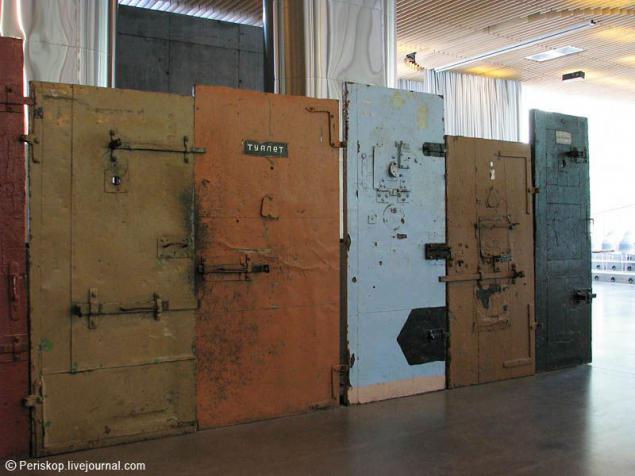
Here is one of the most colorful doors in this collection.
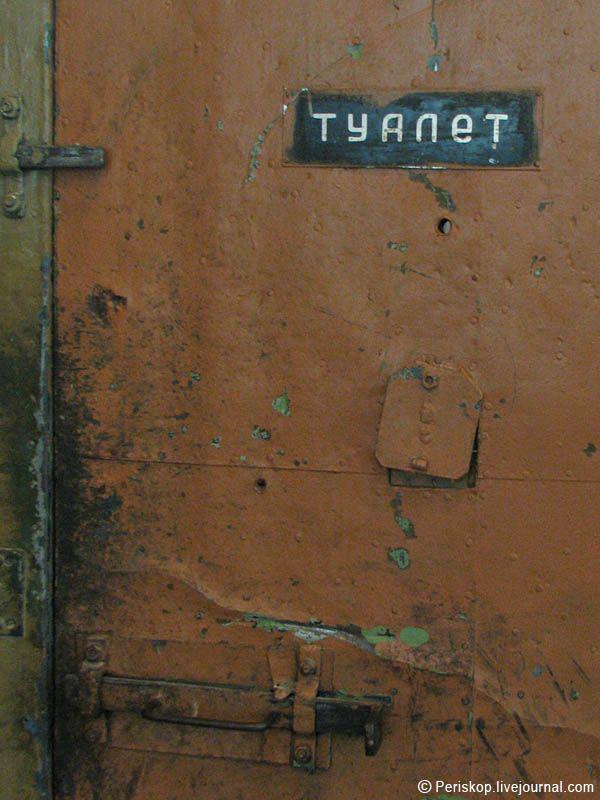
In the far corner of the glass appendix - cinema. For collective rites and meditation.
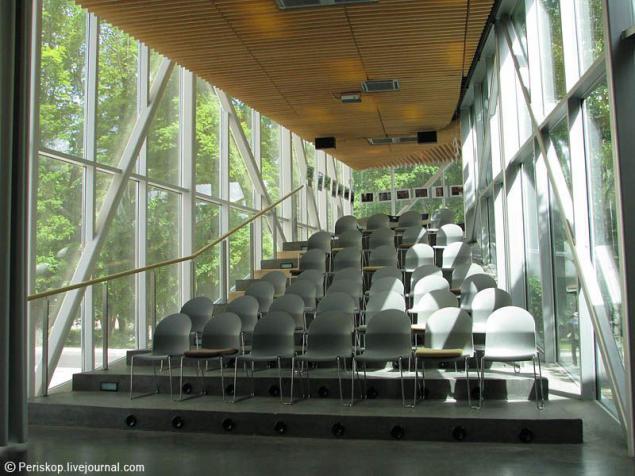
More look at a piece of the collection of Soviet things.

Soviet "invalidkoy" closer.

And of course, "Lada" -Classic. Here is "treshka" strange that no "penny».
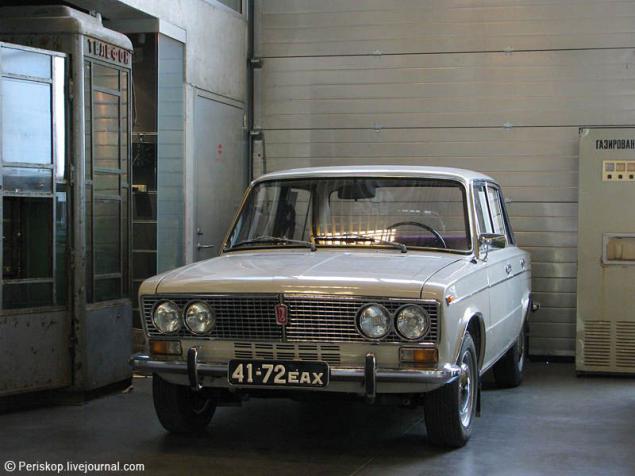
Phonebooth.

Payphone in it. Interestingly, the renovation-restoration of artifacts museum workers specifically do not bother, that in looking at this youth was formed right attitude to "scoop". On the other hand - well, it's all saved.
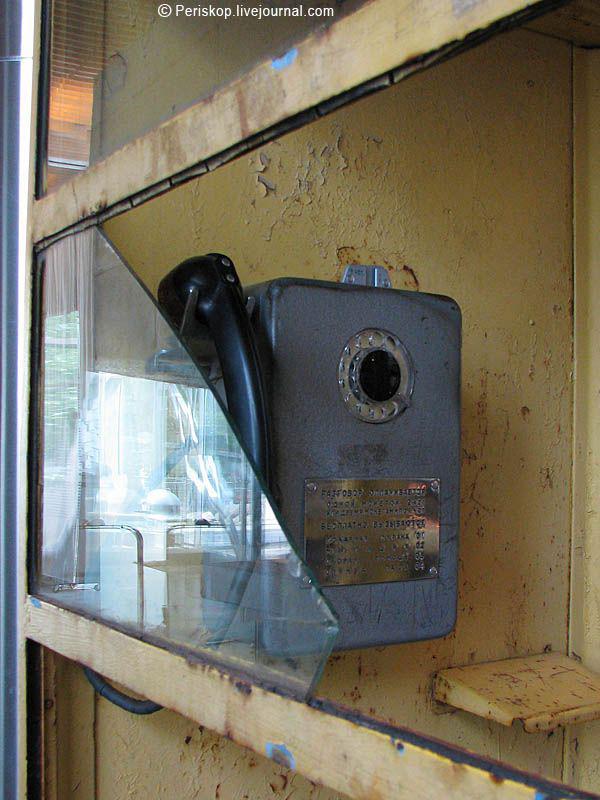
Payphone closer.
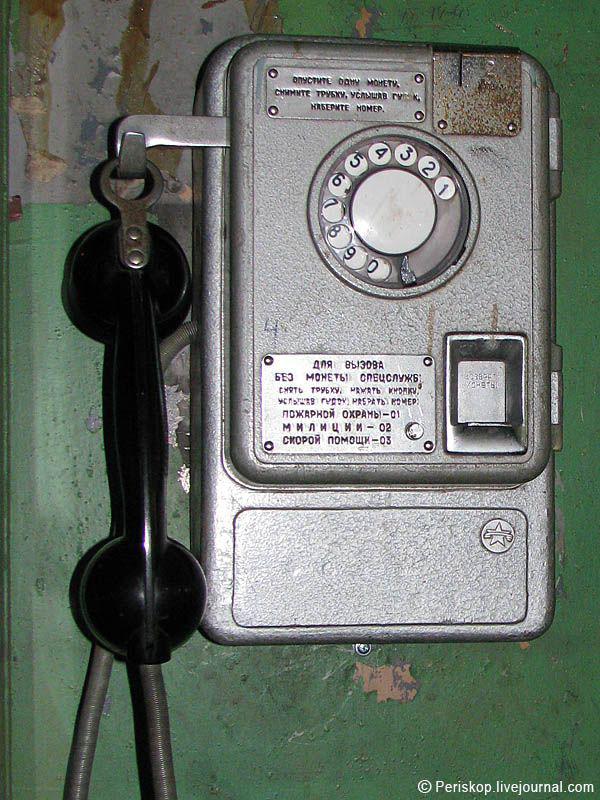
Gazvody apparatus. Alas, there's only later instance, the early '80s. It is a pity, because the devices 60 - 70 were much more charismatic design.
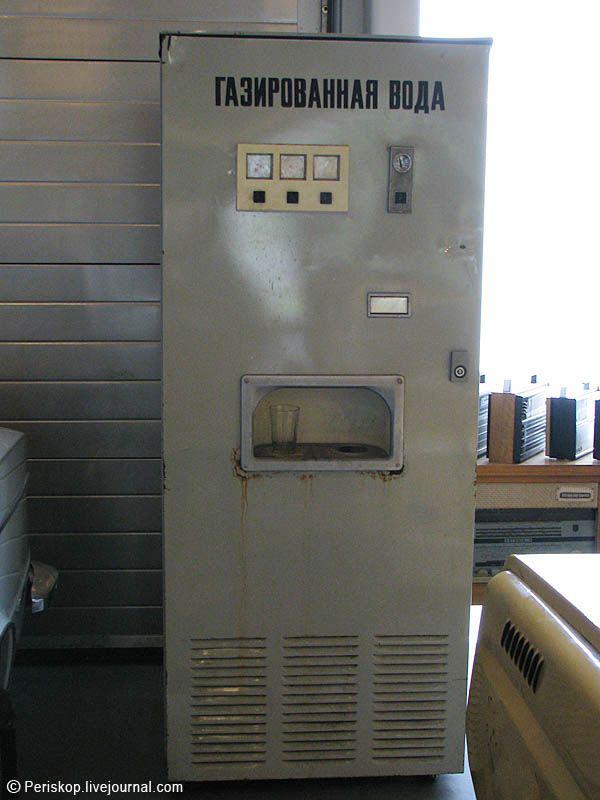
In the floor, trampled underfoot visitors, also includes vmurovaniya some mysterious for me devices (links?).
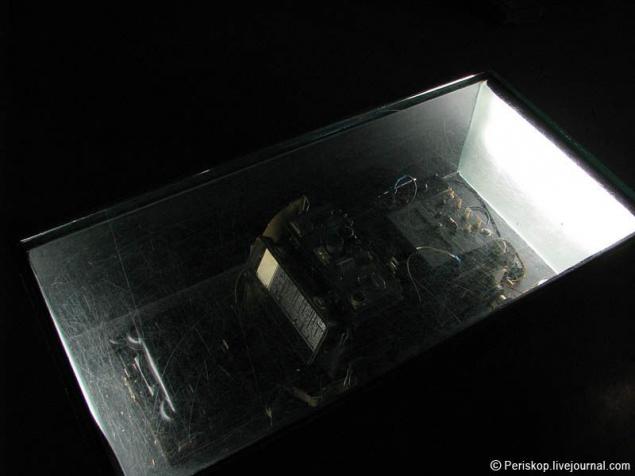
In general, if you look at the exhibition of artistic and carefully, on the play of shadows and reflections, we can do the whole clothing collection photo installation. I did not have so much time there, but I appreciated the usefulness of solid glass for such purposes.
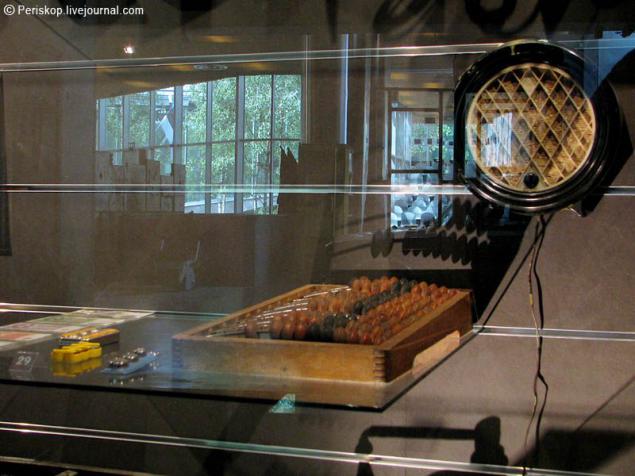
More things Soviet. Old hair from the barber shop and other.

Well, the "room of the investigator," of course - without it, the faithful in the Baltic museum can not be.

Storefronts: KageBe equipment, Siberian boots, first toilet paper, the device for closing cans and other Soviet occupation artifacts.
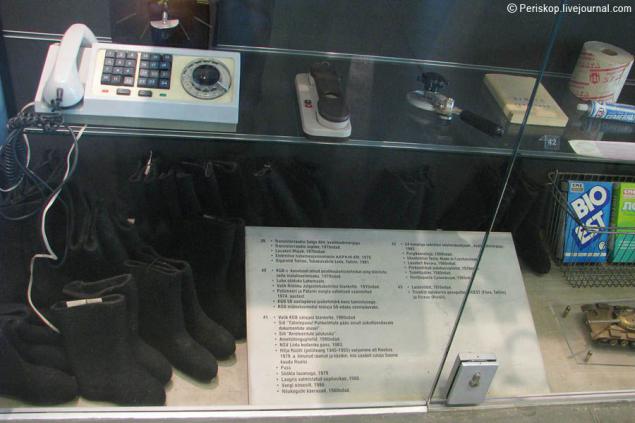
Signs with interior army left the former Soviet Army at the urgent care and disordered in 1992-1994.
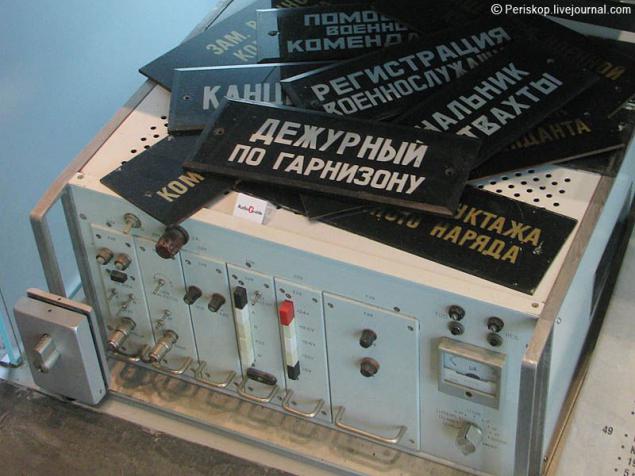
So, went down in the water closet Occupation. To even better popinat shovels past, creators of the top of the path has fitted a couple of half-mast red banners.
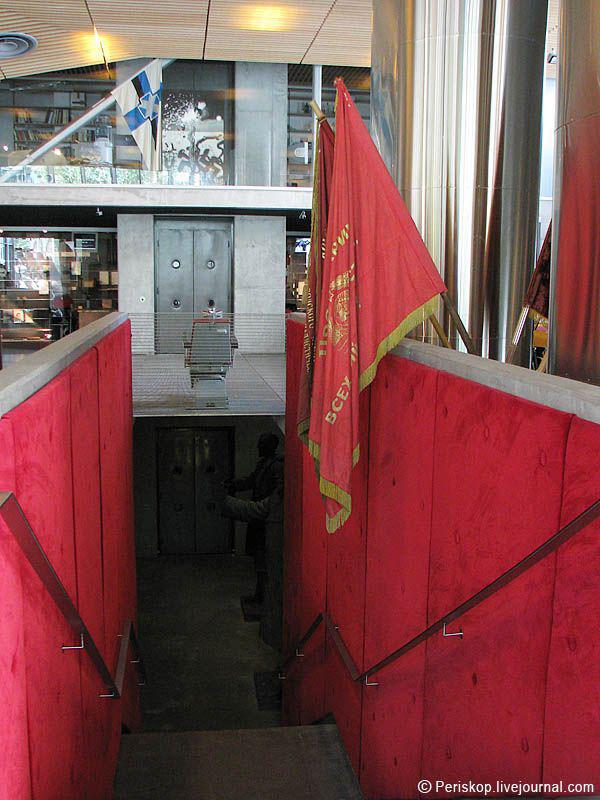
In Dungeons - mysteriously half black lights and there are guessed sinister figures satraps.
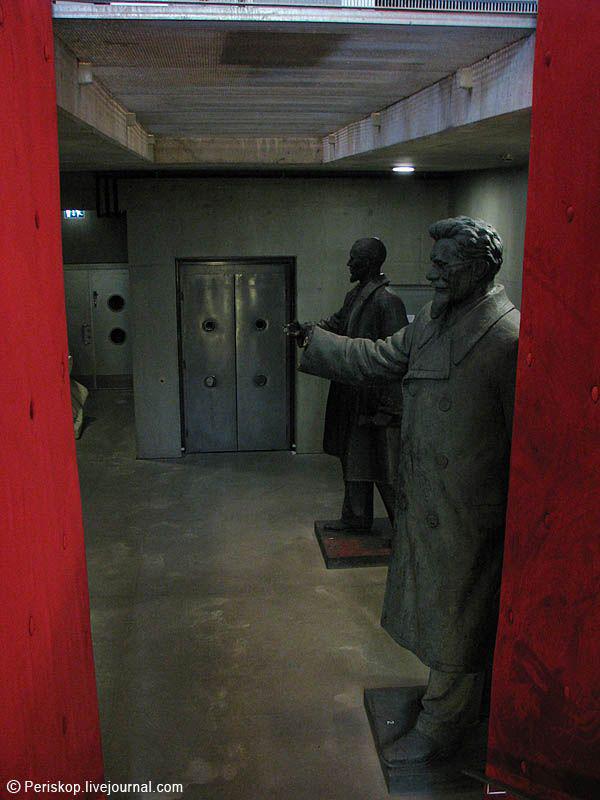
Busts with the leaders placed on all corners vaterklozetnym, sanctuary and not very.
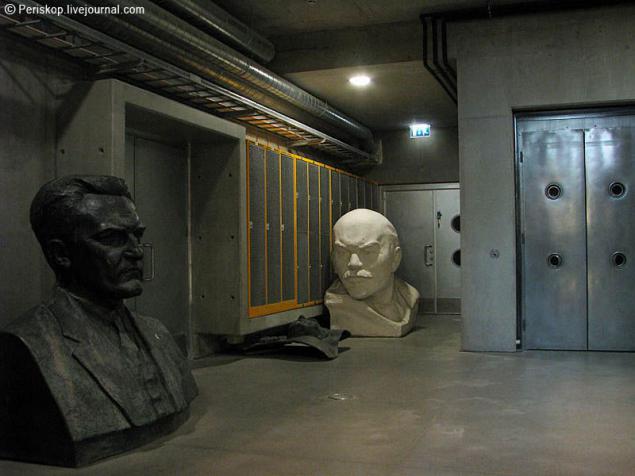
Directly opposite the entrance to the water closet - t-ni Brezhnev period 1978-81., With four stars.
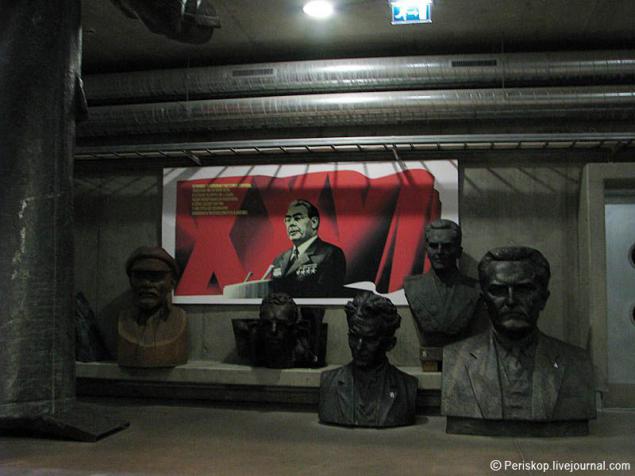
And this is the entrance to the zone of the Main occupation of Baltic All water closets. Brezhnev, if you look closely, there is reflected in a special mirrored wall at the center. This Schaub did not relax during, you know, the main action!
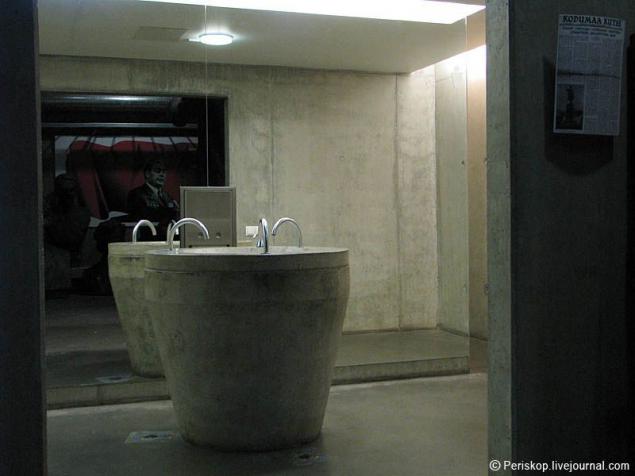
Go back to the light. Kalinin with a broken arm is a guide to exit. Oh, and what is interesting - Estonians cautious for some reason and there hesitate to put Stalin. Other busts apart, but without him. Perhaps, just in case - but then you never know, suddenly back his spirit and napoddaёt too creative for the pope? Better gentle Brezhnev, of course - it's much safer.
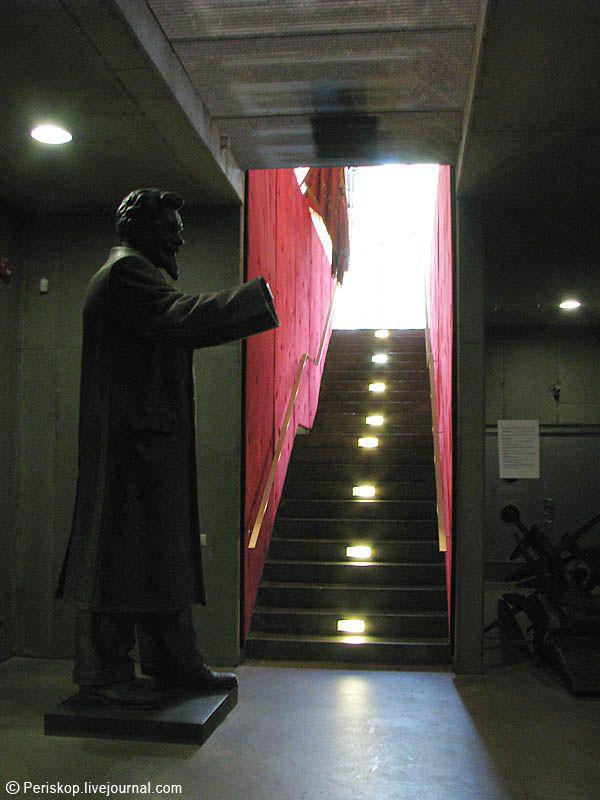
We leave to the light of God, zazhmurivayas of brightness. We were met by the Gulag T-shirt by Hooman Rights, Soviet cigarettes and outrageous occupation plate clamped rights and values (left). And by the way - the same technique with a similar sign was applied and the neighbors-Latvians ihnem Museum.

Right here you can see a lot of curious! :-)
My task considerably easier organizers of the museum, hung from every period of history explaining his inscription (in three languages), and more than that - calling each unique period of its bright unique Name. For example - 1944-1949 gg. - "Stalin's time," 1949-1956 gg. - "The period of Stalinism", and so on. See below, I photographed them. Yes, and that's what is important: all original spelling, I did not invent. Only graphical truth.
Thus, the speech of the period № 1. Read, delve.
[Tallinn here is written everywhere with two "n" at the end, as intended by the Estonian Language Inspectorate]
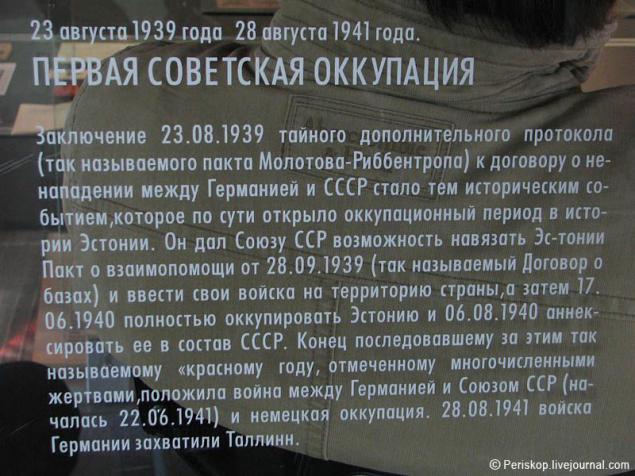
Piece stand on the period № 1.

And yet, about the same period.
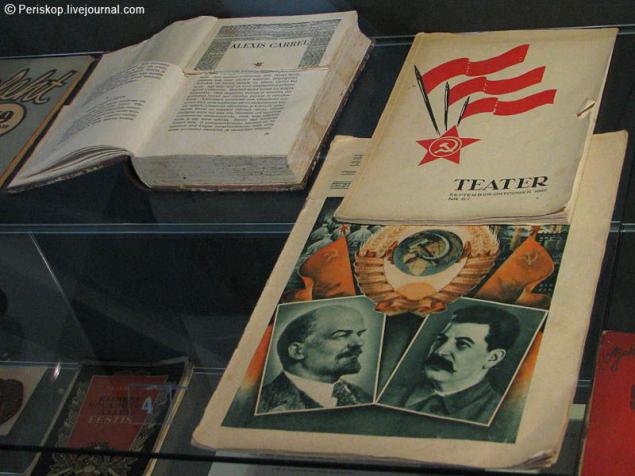
The same period. As you can see, typically occupying illustration. Some imperial girl insolent to the point that gripped the globe! No way, eager to dominate the world!
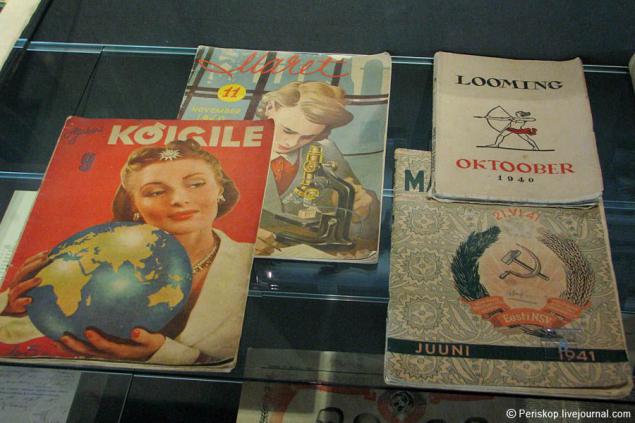
Stalin money.
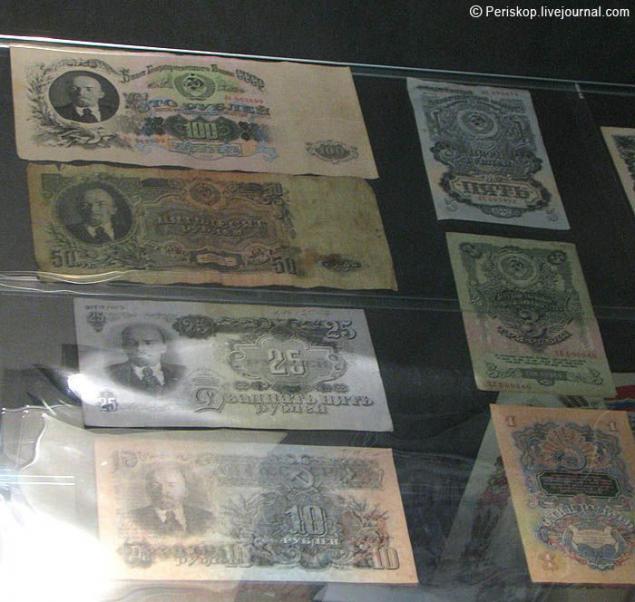
Period №2 - German occupation. It is characterized by the fact that (I quote) & quot; ... the general state of the Oppressed was much easier than the previous one and the subsequent Soviet occupation & quot ;.

German "soft" occupiers, two kinds in stock.
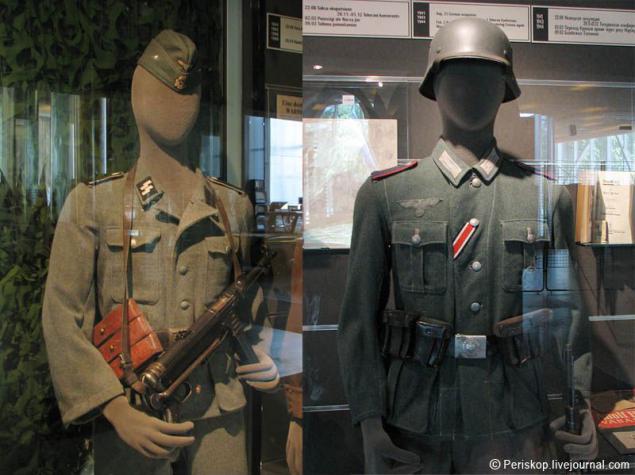
Then the red hordes somehow knock comfortable soft German occupiers, and again regain Estonia. This period №3, called simply - "Stalin's time».
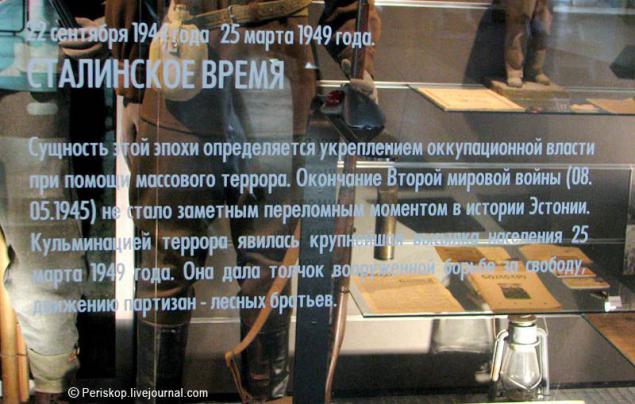
Here it is, the Soviet, unlawful seizure of Tallinn with two "n". On the chest - for some reason - carries his medal "For the Defense of Stalingrad." And yet, no more. Medal - on a modern block, and the form still without shoulder straps with tabs (until February 1, 1943). Tale, but local viewers a ride, they will eat.

The going gets tough: links and more. Scoops reach even to the point of arrogance, that the issue of the Estonian-Finnish epic in Russian. Uzhos!
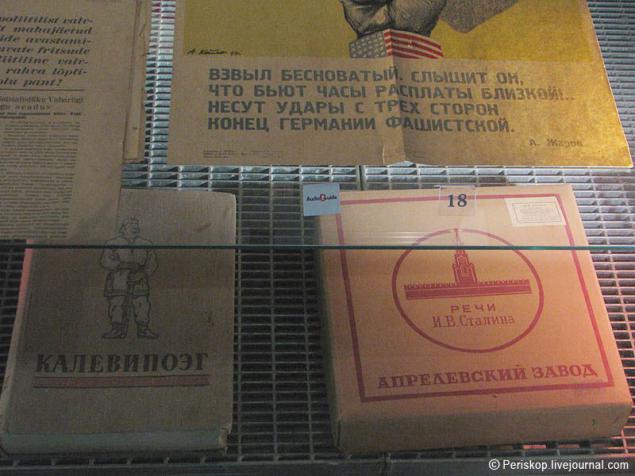
... And Stalin in Estonian. Where is the world coming!

And so, 25 March 1949 epoch number 4 replaces the number 3, now comes "The period of Stalinism».
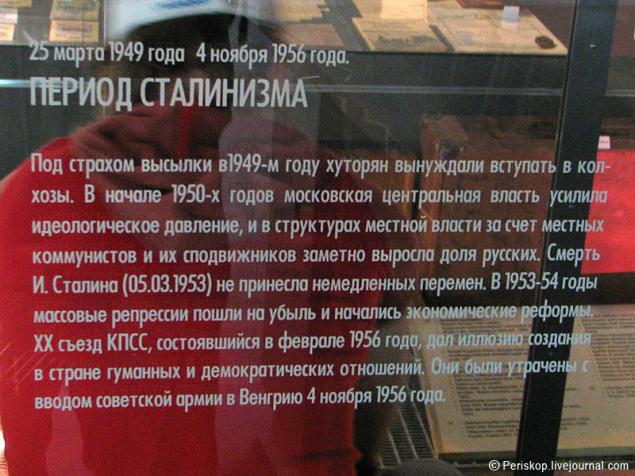
Things artifacts and sent to Siberia.

Then comes the period number 5 - "stabilization time". Its main contents - & quot; ... demoralization and political engagement of the people, expressed in mass Estonians joining the Communist Party & quot ;. Mnda ... what is it they flooded into it? :-)
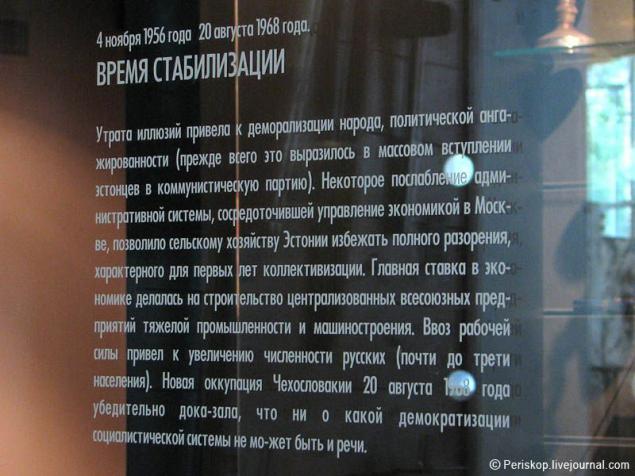
Soviet money after Khrushchev's reforms in 1961 probably familiar to many in real life ...)
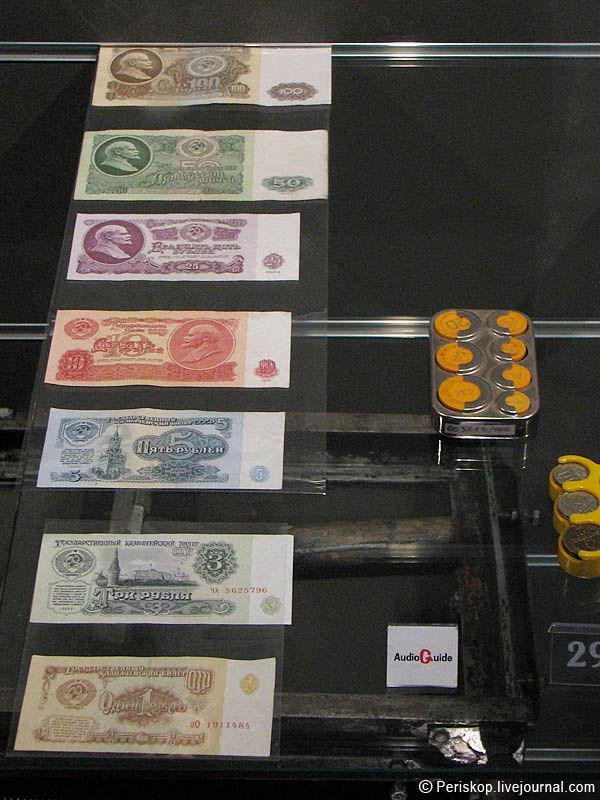
At this time, rampant censorship, and outrageously ridiculed Americans. Serious time ...
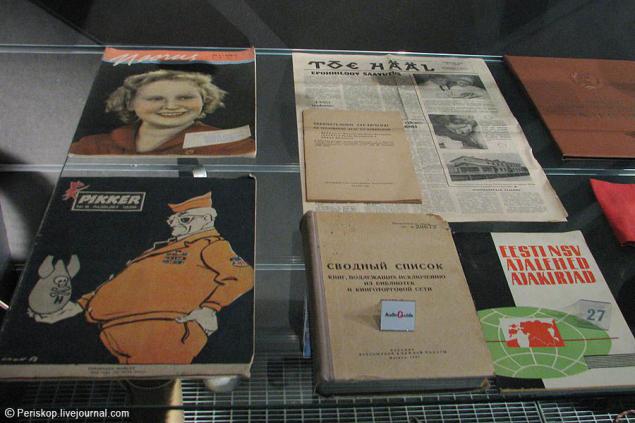
The nation has to put up with the occupation omissions.
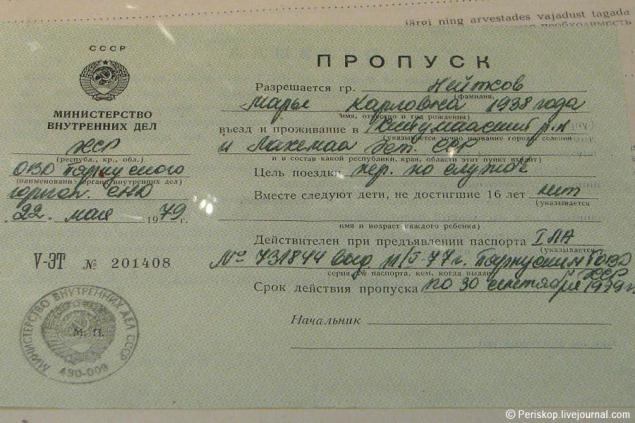
Major events during the 1978-85 biennium., According to the Estonians. Strange as it got here Olympic regatta in Pirita? :-)
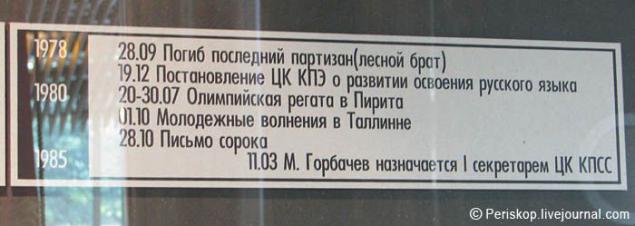
Obituaries in the "Football-Hockey" and the so-called "Five-year plan the funeral." This is, for some reason, put money first post-Soviet 1992.
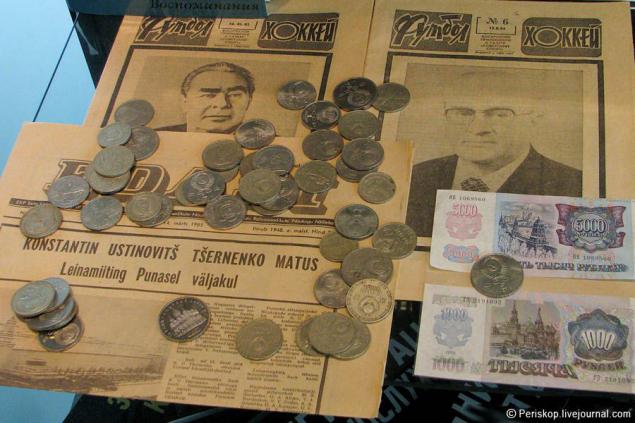
And finally, the Liberation Period! Half a century of struggle of the people and the movement of the Baltic countries has led to long-awaited release of the Empire!

Soviet dembelsky outfit. Suitcase, train station, the border!
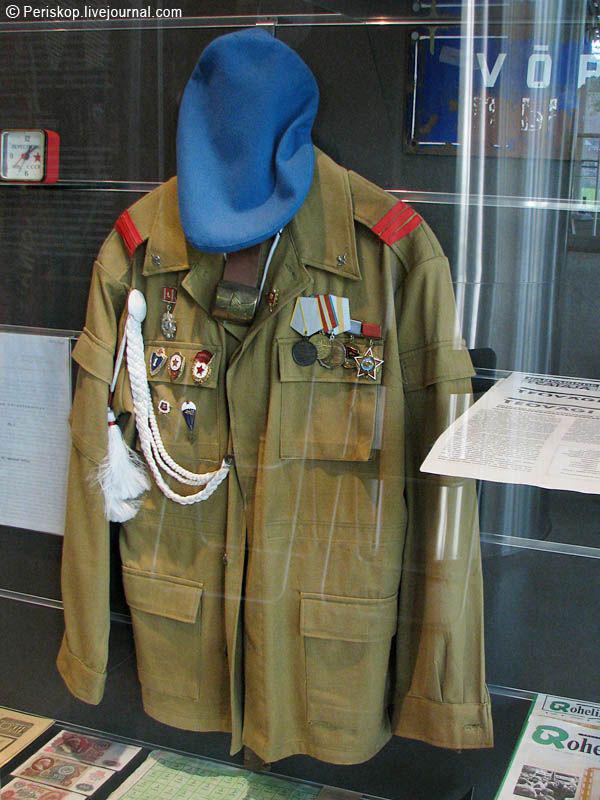
That is so original is seen through the eyes of the modern history of the current Estonian government figures.
Interestingly, though?
And finally, a summary table of the appointment of the museum. Incidentally, in many text adequate provisions. But here's the "schizophrenic splitting" - I just dobilo! :-)
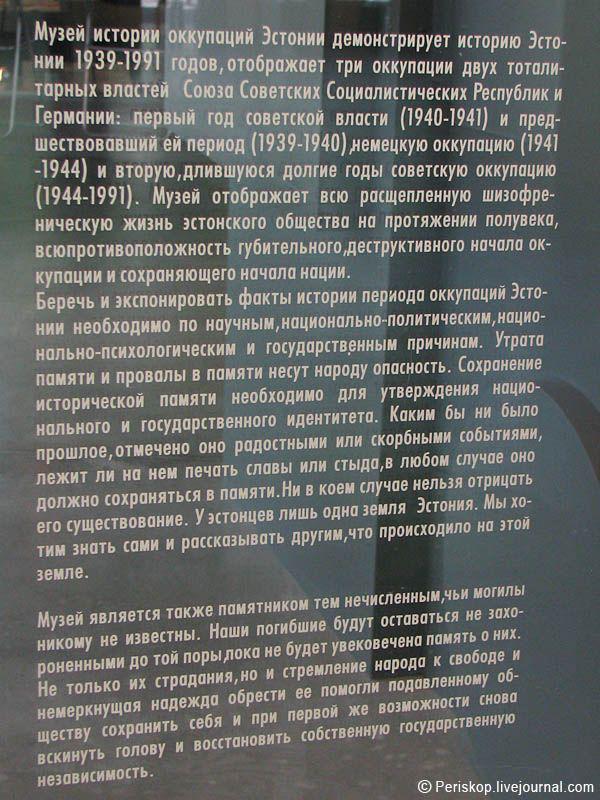
periskop

Inside the museum.

Composition "Two Steam" is central to the exhibition and is dominant, as if designed to constantly remind the visitor of the Nazi-Soviet "identity." And by the way, the correct name of the Museum - Museum of the Occupation (not one of occupation). Although, in reality it is evil lies - as about 97% of the exposition is devoted to only the Soviet era.

Exhibits time of the Nazi occupation (1941-44) piece and find them among the variety is not easy. However, the Nazi episode in the history of Estonia, the creators of the exhibition are quite complacent (their comments show the 2nd part), noting its softness and calm for the country, as compared to the Soviet occupation.

Before the steam locomotive that's worth so cute zhelezyachnye kreatiff.

Let's Let's go for the "Two Steam" and look at the back of their boilers.

In the steam locomotive, co-stars in the rear stands Grandpa Lenin (Stalin not that interesting!), And in the next - the Fuhrer of the Third Reich.

For "Steam Engine" are showcases with exhibits, as well as a space for meditation. You can sit on the chair and indulge in a long video and audio rite on the topic of the Soviet occupiers. In principle, an educated decision.

Closer to meditative storefronts closer. In the foreground - Finn, German and Russian, all in the form of the era, with strained to place persons with woolen tights, why created several surreal watching experience.

Meditation is very relevant here, because right next door to the office, "Defence League" (sort of Estonian DOSAAF). In the photo - packed by all the canons of this guy from the office.

Long series of suitcases in the glazing may symbolize the Great Baltic Link.

If the shift from glass closer to the end wall, we see the beginning of the collection of "Soviet" artifacts (dental chair, a telephone booth, etc.); behind the fence framed banners - the entrance to the Baltic Main Occupation water closet.

Before entering the G.P.O.Vaterklozet - a collection of Soviet prison doors (represented, of course, realistically zamurzannye instances). To inspire youngsters in a difficult time increased fearless "fighters with a shovel».

Here is one of the most colorful doors in this collection.

In the far corner of the glass appendix - cinema. For collective rites and meditation.

More look at a piece of the collection of Soviet things.

Soviet "invalidkoy" closer.

And of course, "Lada" -Classic. Here is "treshka" strange that no "penny».

Phonebooth.

Payphone in it. Interestingly, the renovation-restoration of artifacts museum workers specifically do not bother, that in looking at this youth was formed right attitude to "scoop". On the other hand - well, it's all saved.

Payphone closer.

Gazvody apparatus. Alas, there's only later instance, the early '80s. It is a pity, because the devices 60 - 70 were much more charismatic design.

In the floor, trampled underfoot visitors, also includes vmurovaniya some mysterious for me devices (links?).

In general, if you look at the exhibition of artistic and carefully, on the play of shadows and reflections, we can do the whole clothing collection photo installation. I did not have so much time there, but I appreciated the usefulness of solid glass for such purposes.

More things Soviet. Old hair from the barber shop and other.

Well, the "room of the investigator," of course - without it, the faithful in the Baltic museum can not be.

Storefronts: KageBe equipment, Siberian boots, first toilet paper, the device for closing cans and other Soviet occupation artifacts.

Signs with interior army left the former Soviet Army at the urgent care and disordered in 1992-1994.

So, went down in the water closet Occupation. To even better popinat shovels past, creators of the top of the path has fitted a couple of half-mast red banners.

In Dungeons - mysteriously half black lights and there are guessed sinister figures satraps.

Busts with the leaders placed on all corners vaterklozetnym, sanctuary and not very.

Directly opposite the entrance to the water closet - t-ni Brezhnev period 1978-81., With four stars.

And this is the entrance to the zone of the Main occupation of Baltic All water closets. Brezhnev, if you look closely, there is reflected in a special mirrored wall at the center. This Schaub did not relax during, you know, the main action!

Go back to the light. Kalinin with a broken arm is a guide to exit. Oh, and what is interesting - Estonians cautious for some reason and there hesitate to put Stalin. Other busts apart, but without him. Perhaps, just in case - but then you never know, suddenly back his spirit and napoddaёt too creative for the pope? Better gentle Brezhnev, of course - it's much safer.

We leave to the light of God, zazhmurivayas of brightness. We were met by the Gulag T-shirt by Hooman Rights, Soviet cigarettes and outrageous occupation plate clamped rights and values (left). And by the way - the same technique with a similar sign was applied and the neighbors-Latvians ihnem Museum.

Right here you can see a lot of curious! :-)
My task considerably easier organizers of the museum, hung from every period of history explaining his inscription (in three languages), and more than that - calling each unique period of its bright unique Name. For example - 1944-1949 gg. - "Stalin's time," 1949-1956 gg. - "The period of Stalinism", and so on. See below, I photographed them. Yes, and that's what is important: all original spelling, I did not invent. Only graphical truth.
Thus, the speech of the period № 1. Read, delve.
[Tallinn here is written everywhere with two "n" at the end, as intended by the Estonian Language Inspectorate]

Piece stand on the period № 1.

And yet, about the same period.

The same period. As you can see, typically occupying illustration. Some imperial girl insolent to the point that gripped the globe! No way, eager to dominate the world!

Stalin money.

Period №2 - German occupation. It is characterized by the fact that (I quote) & quot; ... the general state of the Oppressed was much easier than the previous one and the subsequent Soviet occupation & quot ;.

German "soft" occupiers, two kinds in stock.

Then the red hordes somehow knock comfortable soft German occupiers, and again regain Estonia. This period №3, called simply - "Stalin's time».

Here it is, the Soviet, unlawful seizure of Tallinn with two "n". On the chest - for some reason - carries his medal "For the Defense of Stalingrad." And yet, no more. Medal - on a modern block, and the form still without shoulder straps with tabs (until February 1, 1943). Tale, but local viewers a ride, they will eat.

The going gets tough: links and more. Scoops reach even to the point of arrogance, that the issue of the Estonian-Finnish epic in Russian. Uzhos!

... And Stalin in Estonian. Where is the world coming!

And so, 25 March 1949 epoch number 4 replaces the number 3, now comes "The period of Stalinism».

Things artifacts and sent to Siberia.

Then comes the period number 5 - "stabilization time". Its main contents - & quot; ... demoralization and political engagement of the people, expressed in mass Estonians joining the Communist Party & quot ;. Mnda ... what is it they flooded into it? :-)

Soviet money after Khrushchev's reforms in 1961 probably familiar to many in real life ...)

At this time, rampant censorship, and outrageously ridiculed Americans. Serious time ...

The nation has to put up with the occupation omissions.

Major events during the 1978-85 biennium., According to the Estonians. Strange as it got here Olympic regatta in Pirita? :-)

Obituaries in the "Football-Hockey" and the so-called "Five-year plan the funeral." This is, for some reason, put money first post-Soviet 1992.

And finally, the Liberation Period! Half a century of struggle of the people and the movement of the Baltic countries has led to long-awaited release of the Empire!

Soviet dembelsky outfit. Suitcase, train station, the border!

That is so original is seen through the eyes of the modern history of the current Estonian government figures.
Interestingly, though?
And finally, a summary table of the appointment of the museum. Incidentally, in many text adequate provisions. But here's the "schizophrenic splitting" - I just dobilo! :-)

periskop
